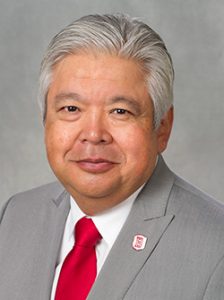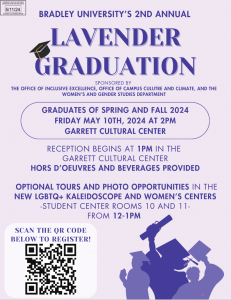George Bodner, a chemistry education professor from Purdue University, has a problem with problem solving.
Bodner visited the Hilltop Tuesday to discuss new ways to teach problem solving as part of the annual Kolb Chemistry lecture series.
“The traditional problem-solving model is, you start by understanding the problem, you devise a plan, you carry out that plan and then you look back and evaluate your work,” Bodner said. “This is a really nice model that has absolutely nothing whatsoever to do with problem solving. This is how people in science and engineering work routine exercises, not how they deal with novel problems.”
In order to improve how problem solving is taught, Bodner said he researched how students at Purdue University solved mathematical problems. He said from this research he developed a new model based in anarchy.
“Paul Feyerabend, a noted philosopher of science, said that science is intrinsically an anarchistic enterprise,” Bodner said. “Feyerabend is not referring to political anarchy but merely the absence of order and control.”
According to Bodner, an anarchistic model involves examining and then reexamining the problem, creating a visual, writing down relevant information and then testing intermediate results.
“You eventually get to the point where you write down an answer, not necessarily the answer,” Bodner said. “A good problem solver will test the answer to see if it makes sense. They’ll start over if they have to and they’ll celebrate if they don’t.”
When Bodner first presented his research and his new model, he said some of his colleagues were dismissive.
“One of my colleagues said to me ‘You can’t possibly say this is what your freshmen are doing, because this is what I do when I do research’,” Bodner said. “I looked at him, and I said ‘I’m sorry, but there is a difference between my freshmen and you: My freshmen are working on something important.’”
Bodner said he further developed his anarchistic model by moving away from purely mathematical problems and exploring problem solving in organic chemistry.
“When confronted with chemical equations, what I found was that students were becoming trapped in a verbal-linguistic representation,” Bodner said. “They moved letters, numbers and lines around, but not within the sense of doing anything related to physical reality. Those students that did solve the equations drew pictures of the chemical reactions they were trying to understand.”
Bodner said this realization reinforced the importance of visualization for problem solving, and also the necessity that professors ground their instruction in the physical world.
“Many students do not create visuals or try the trial-and-error approach, and in fact some of them look me in the eye and tell me that trial-and-error is not a legitimate strategy,” Bodner said. “And that scares the hell out of me because it is the most powerful strategy that I own. We need to embrace a messier and more complex problem-solving model if we are to prepare students for the messy and complex problems they’ll face after college.”





Sounds like an engineering curriculum. Trial and error is a tried and true method of problem solving.